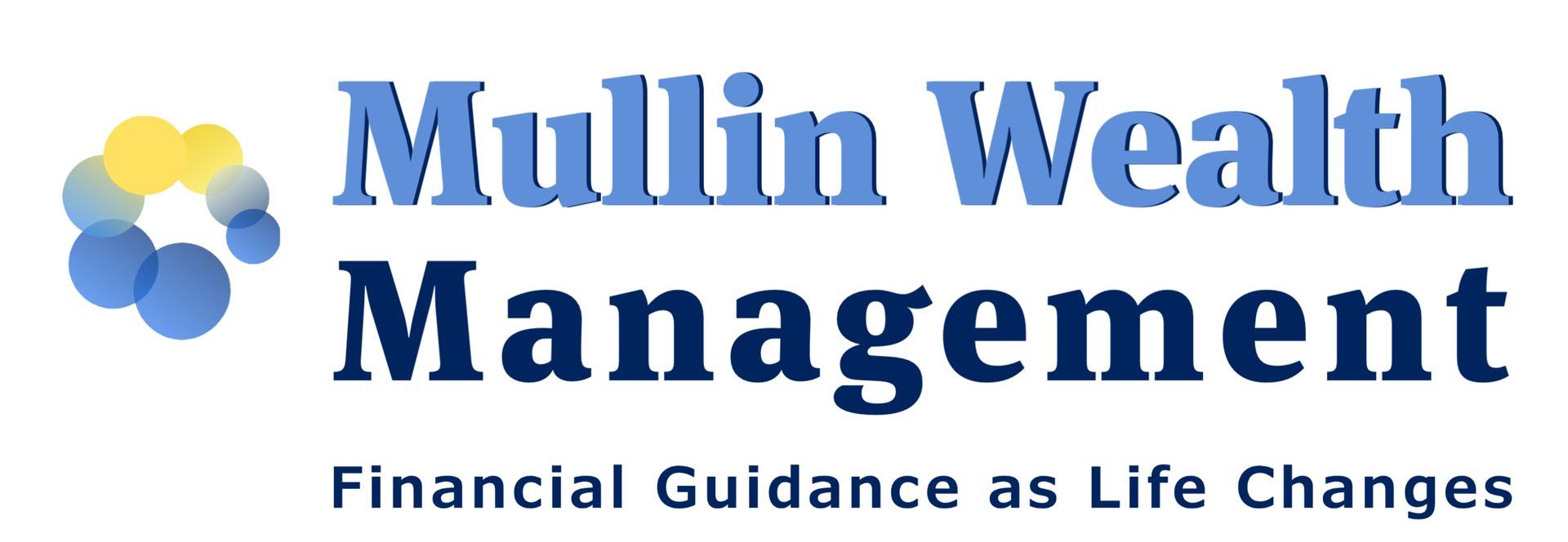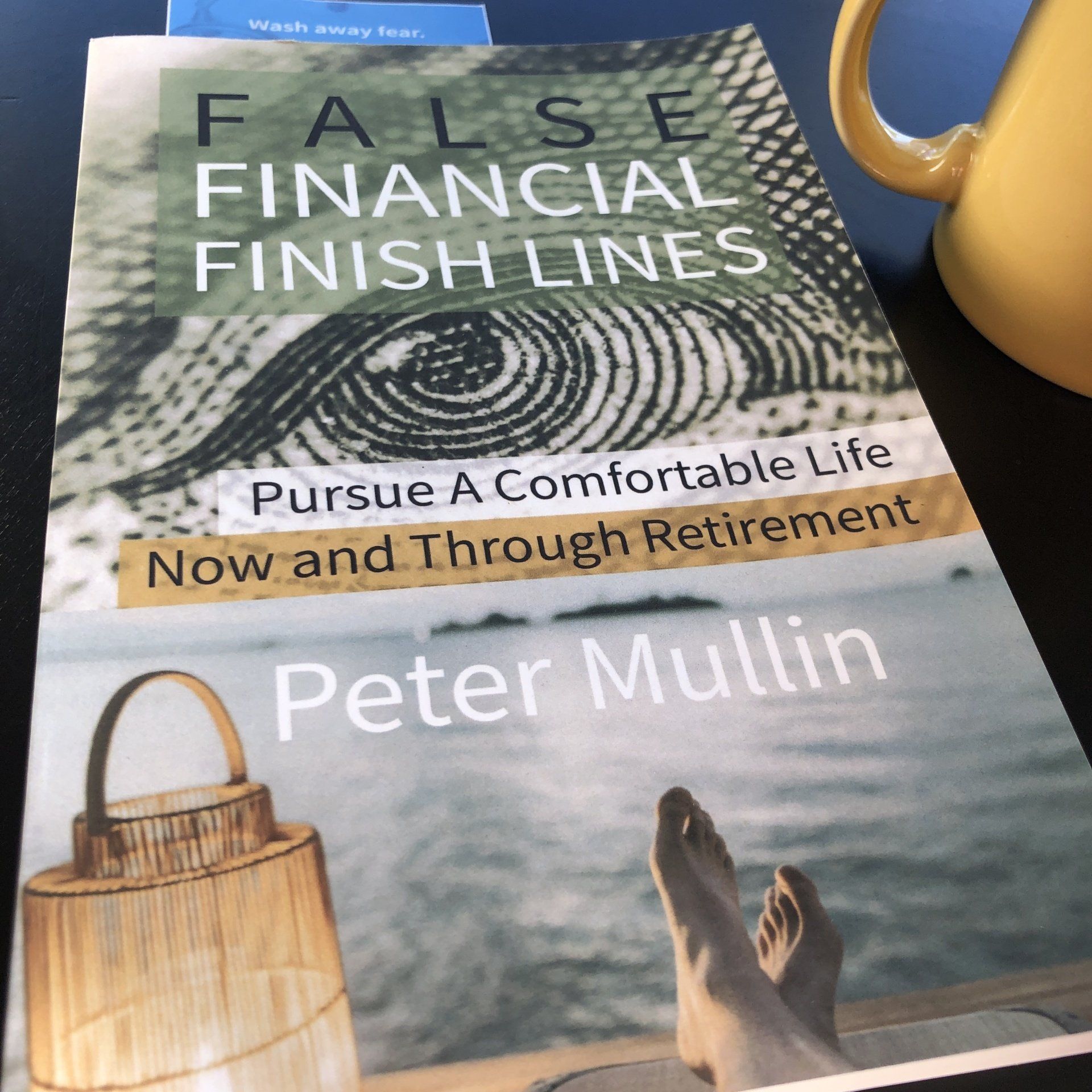Check the background of this investment professional on FINRA's BrokerCheck.

Slide title
PETER MULLIN's book is published on Amazon
Button
Fiduciary
We serve as a fiduciary to advisory and planning clients. Our clients must come first.

Slide title
ST CLOUD MN | MAPLE GROVE | VIRTUAL access to my office
ButtonSlide title
15
Peter Mullin is licensed in 15 states as of 08/01/2020
Button
Slide title
Graduate of Saint John's University | 2008
#GoJohnnies
Button
Slide title
PETER MULLIN is an EAGLE SCOUT
Button-

Slide title
2020, 2021, 2022, 2023 and 2024 "One of LPL's Top Financial Advisors" *Click for info
Button
Knowledge Center & Blog
Schedule an Appointment


 More Posts
More Posts

By Peter Mullin
•
30 Apr, 2024
Peter Mullin, a financial advisor at Mullin Wealth Management in Central Minnesota, today announced that his achievements have been recognized with inclusion in LPL Financial’s Ascent Club* for 2024. This distinction celebrates a select group of advisors on ambitious growth trajectories, who have achieved excellence in financial guidance.

By Peter Mullin
•
01 Mar, 2024
In the final days of 2022, Congress passed a new set of retirement rules designed to facilitate contribution to retirement plans and access to those funds earmarked for retirement. The law is called SECURE 2.0, and it is a follow-up to the Setting Every Community Up for Retirement Enhancement (SECURE) Act passed in 2019. The sweeping legislation has dozens of significant provisions; here are the major provisions of the new law. New Distribution Rules Required minimum distribution (RMD) age will rise to 73 years in 2023. By far, one of the most critical changes was increasing the age at which owners of retirement accounts must begin taking RMDs. Further, starting in 2033, RMDs may begin at age 75. If you have already turned 72, you must continue taking distributions. However, if you are turning 72 this year and have already scheduled your withdrawal, we may want to revisit your approach.1 Access to funds. Plan participants can use retirement funds in an emergency without penalty or fees. For example, 2024 onward, an employee can take up to $1,000 from a retirement account for personal or family emergencies. Other emergency provisions exist for terminal illnesses and survivors of domestic abuse.2 Reduced penalty. Starting in 2023, if you miss an RMD for some reason, the penalty tax drops to 25 percent from 50 percent. If you promptly fix the mistake, the penalty may drop to 10 percent.3 New Accumulation Rules Catch-up contributions. From January 1, 2025, investors aged 60 through 63 years can make annual catch-up contributions of up to $10,000 to workplace retirement plans. The catch-up amount for people aged 50 and older in 2023 is $7,500. However, the law applies certain stipulations to individuals with annual earnings more than $145,000.4 Automatic enrollment. In 2025, the Act requires employers to automatically enroll employees into workplace plans. However, employees can choose to opt-out.5 Student loan matching. In 2024, companies can match employee student loan payments with retirement contributions. The rule change offers workers an extra incentive to save for retirement while paying off student loans.6 Revised Roth Rules 529 to a Roth. Starting in 2024, pending certain conditions, individuals can roll a 529 education savings plan into a Roth individual retirement account (IRA). Therefore, if your child receives a scholarship, goes to a less expensive school, or does not go to school, the money can get repositioned into a retirement account. However, rollovers are subject to the annual Roth IRA contribution limit. Roth IRA distributions must meet a five-year holding requirement and occur after age 591⁄2 to qualify for the tax-free and penalty- free withdrawal of earnings. Tax-free and penalty-free withdrawals are also allowed under certain other circumstances, such as the owner’s death. The original Roth IRA owner is not required to take minimum annual withdrawals.7 SIMPLE and SEP. 2023 onward, employers can make Roth contributions to savings incentive match plans for employees (SIMPLE) or simplified employee pension (SEP).8 Roth 401(k)s and Roth 403(b)s. The new legislation aligns the rules for Roth 401(k)s and Roth 401(b)s with Roth IRA rules. From 2024, the legislation no longer requires minimum distributions from Roth accounts in employer retirement plans.9 More Highlights Support for small businesses. In 2023, the new law will increase the credit to help with the administrative costs of setting up a retirement plan. The credit increases to 100 percent from 50 percent for businesses with less than 50 employees. By boosting the credit, lawmakers hope to remove one of the most significant barriers for small businesses offering a workplace plan.10 Qualified charitable donations (QCDs). 2023 onward, QCDs will adjust for inflation. The limit applies on an individual basis; therefore, for a married couple, each person who is 701⁄2 years and older can make a QCD as long as it remains under the limit.11 The change in retirement rules does not mean adjusting your current strategy is appropriate. Each of your retirement assets plays a specific role in your overall financial strategy, so a change to one may require changes to another. Moreover, retirement rules can change without notice, and there is no guarantee that the treatment of specific rules will remain the same. This article intends to give you a broad overview of SECURE 2.0. It is not intended as a substitute for real-life advice. If changes are appropriate, your trusted financial professional can outline an approach and work with your tax and legal professionals, if applicable. 1. Fidelity.com, December 23, 2022
2. CNBC.com, December 22, 2022
3. Fidelity.com, December 22, 2022
4. Fidelity.com, December 22, 2022
5. Paychex.com, December 30, 2022
6. PlanSponsor.com, December 27, 2022
7. CNBC.com, December 23, 2022
8. Forbes.com, January 5, 2023
9. Forbes.com, January 5, 2023
10. Paychex.com, December 30, 2022
11. FidelityCharitable.org, December 29, 2022 The content is developed from sources believed to be providing accurate information. The information in this material is not intended as tax or legal advice. It may not be used for the purpose of avoiding any federal tax penalties. Please consult legal or tax professionals for specific information regarding your individual situation. This material was developed and produced by FMG Suite to provide information on a topic that may be of interest. FMG, LLC, is not affiliated with the named broker-dealer, state- or SEC-registered investment advisory firm. The opinions expressed and material provided are for general information, and should not be considered a solicitation for the purchase or sale of any security. Copyright 2023 FMG Suite. 1-05355879

By Peter Mullin
•
24 Jan, 2024
I keep a magic 8-ball near me at the office, and I pass them out to clients as a lighthearted reminder to embrace uncertainty. The price we pay as investors is uncertainty. Over time, prudent solutions, and pragmatic optimism just seem to work. I think the biggest risk this year will actually be geopolitical; that being the potential for a broader war in the Middle East. Some facts I follow have had me anticipating some short-term portfolio turbulence. Though nothing to be surprised by. The Presidential election year is upon us. Scroll below to find a chart that shows how the stock market did under different presidents. Major historical events seem to drive markets more than the president sitting in office. Think globally when it comes to investing.
Articles and Assets
I love sharing my thoughts with others. I look forward to keeping in touch. Until then - carry on!
Oops, there was an error sending your message.
Please try again later.
Please try again later.

By Peter Mullin
•
30 Apr, 2024
Peter Mullin, a financial advisor at Mullin Wealth Management in Central Minnesota, today announced that his achievements have been recognized with inclusion in LPL Financial’s Ascent Club* for 2024. This distinction celebrates a select group of advisors on ambitious growth trajectories, who have achieved excellence in financial guidance.

By Peter Mullin
•
01 Mar, 2024
In the final days of 2022, Congress passed a new set of retirement rules designed to facilitate contribution to retirement plans and access to those funds earmarked for retirement. The law is called SECURE 2.0, and it is a follow-up to the Setting Every Community Up for Retirement Enhancement (SECURE) Act passed in 2019. The sweeping legislation has dozens of significant provisions; here are the major provisions of the new law. New Distribution Rules Required minimum distribution (RMD) age will rise to 73 years in 2023. By far, one of the most critical changes was increasing the age at which owners of retirement accounts must begin taking RMDs. Further, starting in 2033, RMDs may begin at age 75. If you have already turned 72, you must continue taking distributions. However, if you are turning 72 this year and have already scheduled your withdrawal, we may want to revisit your approach.1 Access to funds. Plan participants can use retirement funds in an emergency without penalty or fees. For example, 2024 onward, an employee can take up to $1,000 from a retirement account for personal or family emergencies. Other emergency provisions exist for terminal illnesses and survivors of domestic abuse.2 Reduced penalty. Starting in 2023, if you miss an RMD for some reason, the penalty tax drops to 25 percent from 50 percent. If you promptly fix the mistake, the penalty may drop to 10 percent.3 New Accumulation Rules Catch-up contributions. From January 1, 2025, investors aged 60 through 63 years can make annual catch-up contributions of up to $10,000 to workplace retirement plans. The catch-up amount for people aged 50 and older in 2023 is $7,500. However, the law applies certain stipulations to individuals with annual earnings more than $145,000.4 Automatic enrollment. In 2025, the Act requires employers to automatically enroll employees into workplace plans. However, employees can choose to opt-out.5 Student loan matching. In 2024, companies can match employee student loan payments with retirement contributions. The rule change offers workers an extra incentive to save for retirement while paying off student loans.6 Revised Roth Rules 529 to a Roth. Starting in 2024, pending certain conditions, individuals can roll a 529 education savings plan into a Roth individual retirement account (IRA). Therefore, if your child receives a scholarship, goes to a less expensive school, or does not go to school, the money can get repositioned into a retirement account. However, rollovers are subject to the annual Roth IRA contribution limit. Roth IRA distributions must meet a five-year holding requirement and occur after age 591⁄2 to qualify for the tax-free and penalty- free withdrawal of earnings. Tax-free and penalty-free withdrawals are also allowed under certain other circumstances, such as the owner’s death. The original Roth IRA owner is not required to take minimum annual withdrawals.7 SIMPLE and SEP. 2023 onward, employers can make Roth contributions to savings incentive match plans for employees (SIMPLE) or simplified employee pension (SEP).8 Roth 401(k)s and Roth 403(b)s. The new legislation aligns the rules for Roth 401(k)s and Roth 401(b)s with Roth IRA rules. From 2024, the legislation no longer requires minimum distributions from Roth accounts in employer retirement plans.9 More Highlights Support for small businesses. In 2023, the new law will increase the credit to help with the administrative costs of setting up a retirement plan. The credit increases to 100 percent from 50 percent for businesses with less than 50 employees. By boosting the credit, lawmakers hope to remove one of the most significant barriers for small businesses offering a workplace plan.10 Qualified charitable donations (QCDs). 2023 onward, QCDs will adjust for inflation. The limit applies on an individual basis; therefore, for a married couple, each person who is 701⁄2 years and older can make a QCD as long as it remains under the limit.11 The change in retirement rules does not mean adjusting your current strategy is appropriate. Each of your retirement assets plays a specific role in your overall financial strategy, so a change to one may require changes to another. Moreover, retirement rules can change without notice, and there is no guarantee that the treatment of specific rules will remain the same. This article intends to give you a broad overview of SECURE 2.0. It is not intended as a substitute for real-life advice. If changes are appropriate, your trusted financial professional can outline an approach and work with your tax and legal professionals, if applicable. 1. Fidelity.com, December 23, 2022
2. CNBC.com, December 22, 2022
3. Fidelity.com, December 22, 2022
4. Fidelity.com, December 22, 2022
5. Paychex.com, December 30, 2022
6. PlanSponsor.com, December 27, 2022
7. CNBC.com, December 23, 2022
8. Forbes.com, January 5, 2023
9. Forbes.com, January 5, 2023
10. Paychex.com, December 30, 2022
11. FidelityCharitable.org, December 29, 2022 The content is developed from sources believed to be providing accurate information. The information in this material is not intended as tax or legal advice. It may not be used for the purpose of avoiding any federal tax penalties. Please consult legal or tax professionals for specific information regarding your individual situation. This material was developed and produced by FMG Suite to provide information on a topic that may be of interest. FMG, LLC, is not affiliated with the named broker-dealer, state- or SEC-registered investment advisory firm. The opinions expressed and material provided are for general information, and should not be considered a solicitation for the purchase or sale of any security. Copyright 2023 FMG Suite. 1-05355879

By Peter Mullin
•
24 Jan, 2024
I keep a magic 8-ball near me at the office, and I pass them out to clients as a lighthearted reminder to embrace uncertainty. The price we pay as investors is uncertainty. Over time, prudent solutions, and pragmatic optimism just seem to work. I think the biggest risk this year will actually be geopolitical; that being the potential for a broader war in the Middle East. Some facts I follow have had me anticipating some short-term portfolio turbulence. Though nothing to be surprised by. The Presidential election year is upon us. Scroll below to find a chart that shows how the stock market did under different presidents. Major historical events seem to drive markets more than the president sitting in office. Think globally when it comes to investing.
Live Presentation Archive
Securities and Advisory services offered through LPL Financial, A Registered Investment Advisor, Member
FINRA /
SIPC .
The LPL Financial registered representative associated with this site may only discuss and/or transact securities business with residents of the following states: AK, AR, AZ, CA, CO, FL, IA, ID, IL, MN, MO, NM, TX, WA, WI


